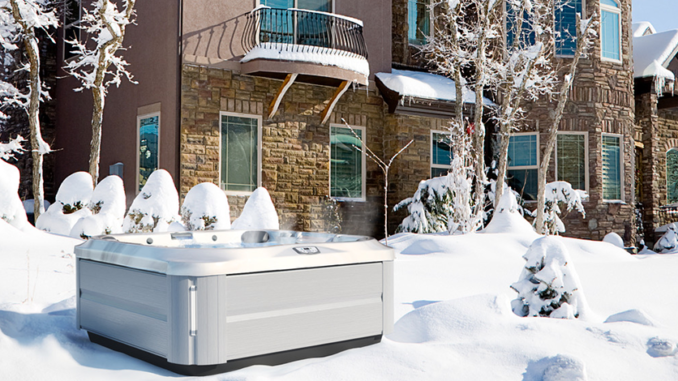
By Ken Sturtz
One of the most enjoyable ways to beat the cold is soaking in a hot tub. If you’re looking for tranquility it’s hard to beat watching snowflakes fall while steam rises around you.
“The winter is without question my favorite time to use my hot tub,” said Allen Jerabeck, a pool and spa specialist with Central New York-based Tarson Pools & Spas. “It’s really just magical.”
If you’re considering investing in a hot tub there are a variety of brands and models on the market with a range of prices and features. It’s smart to find a dealer that has a good reputation and does its own service work.
With Central New York’s frigid winters, however, one of the biggest considerations is choosing a hot tub that’s energy efficient.
Jerabeck said a typical hot tub might cost $30-40 a month to heat in winter. That can easily double with a poorly insulated model or a cover that doesn’t stay on tight. Remember that hot tub systems are programmed to maintain a set temperature.
“And it’s going to keep pumping heat into that until it hits that temperature,” Jerabeck said.
Two of the best ways to keep energy consumption low is by choosing a model that’s well insulated inside and that comes with a quality cover.
Premium hot tubs will have a fully sealed and well insulated cover to keep the heat in. It’s best to avoid vinyl covers because they tend to get brittle in the cold. It’s also wise to replace an existing cover if it has become old or damaged. High-quality tubs will have a fully sealed plastic base rather than rubber sheeting stapled to the bottom. A sealed base helps keep the elements out and heat in, Jerabeck said.
Another consideration is deciding where to locate the hot tub. Some people partially enclose them with gazebos or pergolas to help shield them from the elements.
“Those things are great but they aren’t always able to be close to the house,” Jerabeck said.
It’s generally best to place the hot tub so you have the shortest path to and from your house, he said. The biggest deterrent to using a hot tub during winter is the prospect of shoveling a path through the snow. To address that, Jerabeck said his favorite spa accessory is heated walkway mats that can melt up to two feet of snow, eliminating the need to clear a path to the hot tub.
Another accessory worth considering is a wireless monitoring system available with many hot tub brands. A smart tub can notify you and your dealer if there is a power failure, for example. That can come in handy if you’re traveling out of town and haven’t drained your tub, Jerabeck said, saving thousands of dollars in damage.
The good news is that even if your tub loses power, a well-insulated unit can go as long as a week before freezing becomes a serious concern.
How much?
Hot tub prices can vary widely. The national average is around $6,000, but an inflatable hot tub can be purchased for less than $1,000. Hard-sided entry-level hot tubs typically start at a few thousand dollars and go up in price depending on size, quality, type of materials used, features and where it’s being installed. It’s easy to spend upwards of $15,000 on a large, higher-end hot tub. Some ultra-luxurious hot tubs can cost about as much as a car.
